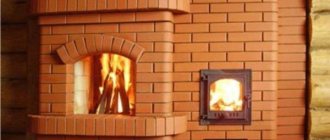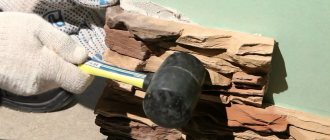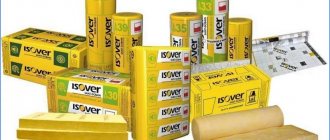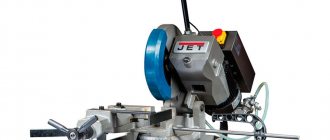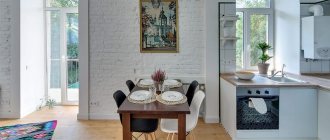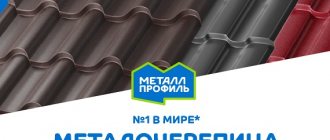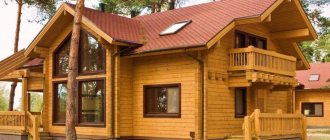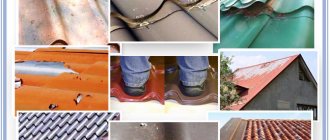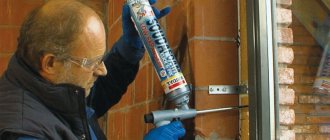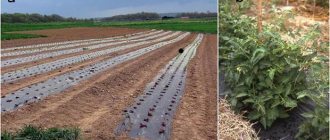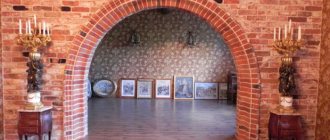It has already become commonplace that stoves have no statute of limitations and are built to last for years. The key factor in their long-term operation is the correctly selected brick.
The main thing you should pay attention to when purchasing is not the low price, but the quality of the product. But the appearance is also important, since not all material is suitable for stove masonry.
We recommend reading:
- How to lay a tandoor out of brick
- Laying a brick barbecue
What materials are suitable for the oven
The main function that a high-quality stove should cope with is heating the room. Some designs (barbecue, grill) have sections for cooking.
Provided that all masonry standards are observed, the mortar is properly mixed and the material is selected, fuel consumption will be economical and heat transfer will be high.
Depending on the type of masonry, there are bricks:
- Facial. Used for lining the finished stove, with a homogeneous structure. It has a neat appearance, smooth sides.
- Private, full-bodied. Used for interior masonry.
Builders recommend inspecting all the material before work and immediately sorting out any defective materials with chips or cracks. It is better to take one type and batch.
Let's take a closer look at the main types of heat-resistant bricks.
Ceramic
Produced in two ways:
- semi-dry pressing;
- plastic molding.
In the first case, the raw material passes through a special nozzle - a die, as a result of which the layer acquires the desired shape, is cut, and only then is subjected to high-temperature treatment.
In the second, the prepared mass is laid out in molds and kept under pressure. Then it is fired for 12–15 hours at +11500 C. This way the dimensions are more accurate and the surface is smooth and neat.
The most suitable brick for stoves and fireplaces is ordinary red ceramic and front plastic molded. They are laid out only from solid single ones with identical modules.
Clinker
To make it, they use a clay mass - clinker, which is fired at temperatures up to 15,000 C. In fact, this is a standard heat-resistant brick.
Has a high thermal conductivity. Dark color. Lasting. The material is practically without pores, so it tolerates frost well.
Heavy in weight. Often combined with red ceramic bricks. Resistant to chemicals. But due to its high cost, it is not very popular among stove makers. And in terms of heat resistance, it is significantly inferior to fireclay.
Principle of operation
Any stove has three main components: firebox, pipe, chimney. The main part is the firebox. This is where the wood burns. There is a hole at the bottom. Through it, air enters the firebox, which is necessary for combustion. This hole is covered with a special grill, so the firewood does not fall out. Air gets inside the firebox, and ash and other combustion products fall from the firebox into the hole.
There is a special door that allows you to put firewood into the firebox. And the firebox itself is closed on all sides. Just above the firebox is the hob. It is heated by fire and allows you to cook food. Oven ovens work the same way.
The ash pan chamber is located under the firebox. It also has a door to allow the chamber to be cleaned. The door is also able to regulate the amount of air that enters the firebox. In the arch of the firebox there is another hole - hailo. It is through it that hot air comes out, which heats the oven.
The pipes are designed to remove combustion products from the furnace. There are two types:
- Mounted. Installed on the stove.
- Indigenous. They may have their own foundation or be located inside a wall.
The most important feature that distinguishes a stove from a fireplace is that in the second option you can freely observe the fire. To prevent heat from escaping into the pipe, a heat shield is installed. In the combined version, the stove-fireplace has all the advantages of a stove and allows you to observe the flame.
Types of Fire Bricks
It is obtained by pressing and firing at high temperatures. Depending on the composition, there are several types:
- Fireclay. Optimal stove material. Belongs to a series of aluminosilicate. Which also includes mullite, semi-acid, mullite-siliceous. They are made the same way. They differ only in raw material additives. Fireclay is available in several colors. It depends on the type of clay added. The most reliable is yellow. Can be paired with a ceramic look without losing strength. Provided that the proportions in the solution are observed, such a stove will be durable. The photo below shows an example of fireclay.
- Quartz. Heat resistant material. The main raw material is quartz sand. Low CTE (coefficient of thermal expansion). Together with dinas, it belongs to the series of silica rocks. Externally it differs from chamotte in the absence of dark particles on the surface. It should be noted that this type of refractory brick is used only in areas where it interfaces with the metal elements of the furnace. It is not suitable for interior masonry as it can react with alkaline chemicals.
- Carbon. Coke or graphite is added to the raw material. Withstands temperatures above +16000 C. It is often used for blast furnaces. For home masonry, there is no need to use a material with such heat resistance.
- Alumina or corundum. Its main component is heat-resistant clay. Not afraid of chemicals or temperature changes. Good material for industrial purposes. It is not worth choosing for home structures. Much more expensive than fireclay.
Therefore, to buy high-quality bricks, you should buy yellow fireclay or red ceramic type.
Types of chimneys
The chimney acts as a channel system and is located inside the brickwork. The dimensions of the chimney directly depend on the dimensions of the fireplace stove. There are several types of chimneys:
- The simplest chimneys consist of certain sections that combine direct and return air flow. This design ends with a pipe. Return current areas are constructed from parallel channels. This is done in order to increase efficiency and improve air heating.
- Multi-turn chimneys. They differ from the previous ones only in the number of alternations of sections. The walls are heated more evenly because of this.
- Chimney without ducts. In such designs, everything is focused on the camera. Gases from the heil tend to the roof of the chamber, where they cool and descend back. The vapors give off their heat to the walls of the hood chamber. Exhaust gases exit into the pipe through openings at the bottom and side.
Any type can be used. It all depends on your needs.
Material that cannot be used for stove masonry
The following types of brick are not suitable for this purpose:
- silicate white
- raw without firing;
- hollow;
- slip.
The first is not a fire-resistant material. Suitable for cladding the outside of houses. The second is hygroscopic. When first fired, it will begin to crack. The third one cannot withstand sudden temperature changes. Deforms under thermal load. The slip brick will simply crumble due to temperature fluctuations.
Facing
Separately, it is worth mentioning the facing brick, which with equal success resists both water and increased temperature. The specific heat capacity of this material is at the level of 0.88 kJ/(kg K), with a density of up to 2700 kg/m3. Facing bricks are available for sale in a wide variety of shades. They are suitable for both cladding and laying.
Selection of brand and shape
The standard dimensions of solid refractory bricks are 25*12*6.5 cm, the furnace module is 23*12.5*6.5 cm.
For ordinary masonry, the M150 grade will suffice; for a more complex, two-story masonry, M200, M250.
An inexpensive fireclay is suitable for laying the firebox - Ш5, ША5, Ш8, ША8. Factory-made bricks, narrowed in thickness and measuring 23*11.4*4 cm, are often used.
To decorate the combustion vaults, use grades Ш22–Ш45. The first number in the marking indicates the rib or end type of wedge.
There are shaped bricks that have the shape of an isosceles or equilateral trapezoid. The greatest demand is for ribbed wedge-shaped products in the following sizes:
- 23*12.5*6.5/4.5 cm;
- 23*12.5*6.5/5.5 cm;
- 23*11.4*6.5/5.5 cm.
The length of the base of the trapezoid is indicated through the fraction line.
Photo: possible brick shapes
The end shaped material is used for the arches of the firebox in the shape of a semicircle.
Silicate
As for sand-lime brick, it can be solid, hollow and porous. Based on size, there are single, one-and-a-half and double bricks. On average, sand-lime brick has a density of 1600 kg/m3. The noise-absorbing characteristics of silicate masonry are especially appreciated: even if we are talking about a wall of small thickness, its level of sound insulation will be an order of magnitude higher than in the case of other types of masonry material.
Popular manufacturers of furnace material
There are a sufficient number of them on the construction market. The price of refractory bricks ranges from 16 to 60 rubles per 1 piece. They sell it in pallets of 320–360 pieces or by weight for 1 ton. The approximate cost of the material in both cases is up to 14 thousand rubles per pallet or ton.
Below are the most popular manufacturers of good quality heat-resistant bricks.
Wienerberger AG
An Austrian concern, which is considered the world market leader in the production of tiles and bricks. Its factories are located in 30 countries. Russia is also one of them.
A popular stove material is Terca brand refractory brick.
Lode
Lode is a Latvian manufacturing plant. Specializes in the production of various types of bricks.
The stove material produced by him, type M500, is popular - red, solid, with a high frost resistance. Suitable for laying indoors and outdoors.
Photo: preparing bricks for shipment
Has three working surfaces. It has several release forms. The semicircular one is in greatest demand. Its plus is its aesthetic appearance, due to which the lining of the stove looks neat.
Heylen Bricks
Belgian company. It has been producing bricks of all shapes and brands for more than 100 years. The products are distinguished by their strength, durability, and a rich palette of colors. This is one of the few companies that fulfills orders for the production of material for stoves, houses, cottages, garages, saunas, so that the client can bring his original ideas to life. The customer can participate in the production of the material itself.
The only negative is the high prices of imported products.
Vitebsk plant
The official name is OJSC Keramika. Production facilities are located in the Republic of Belarus.
Photo: Belarusian product
The main products are red ceramic bricks of the M180, M200 brands, which are used for cladding stoves and fireplace structures. The price is quite reasonable. But you should not work with this material in areas with high humidity levels.
Ceramic
Based on production technology, bricks are classified into ceramic and silicate groups. Moreover, both types have significant differences in material density, specific heat capacity and thermal conductivity coefficient. The raw material for the manufacture of ceramic bricks, also called red bricks, is clay, to which a number of components are added. The formed raw blanks are fired in special ovens. The specific heat capacity can vary between 0.7-0.9 kJ/(kg K). As for the average density, it is usually at the level of 1400 kg/m3.
Among the strengths of ceramic bricks are:
1. Smoothness of the surface. This increases its external aesthetics and ease of installation. 2. Resistance to frost and moisture. Under normal conditions, walls do not require additional moisture and thermal insulation. 3. Ability to withstand high temperatures. This allows the use of ceramic bricks for the construction of stoves, barbecues, and heat-resistant partitions. 4. Density 700-2100 kg/m3. This characteristic is directly affected by the presence of internal pores. As the porosity of a material increases, its density decreases and its thermal insulation characteristics increase.
Concrete crown: what is it and how to choose
Recommendations for choosing bricks for different types of stoves
Before you begin construction, it is worth understanding what material is needed for your structure.
B-B-Q
It has a hob and oven for baking meat, pizza and other dishes. Such a structure can weigh a lot, so it must stand on a reliable foundation.
Photo: barbecue
A red solid ceramic brick is used for the base. The solution is mixed from clay and sand.
The firebox is made from heat-resistant fireclay. Regular dimensions:
- depth – 3 bricks;
- width – from 5 to 7 rows.
Fireclay is also used for laying the chimney, with the exception of the last two rows - they can be made of ceramic.
It is prohibited to use silicate or hollow type. Because they are not fireproof and begin to crumble after the first fire.
Russian stove
Recommendations for choosing material are the same as for barbecue. But it is allowed to form a firebox from heat-resistant ceramic bricks. This is explained by the relaxed thermal regime of the furnace.
Fireplace
Most families choose a fireplace as a source of heating for a country house. It creates a special atmosphere and comfort in the room.
The internal part is formed from fireclay bricks. The cladding can be done with figured shaped material. It will give the structure a neat look, and the variety of colors and shapes will allow you to decorate the interior in retro, neoclassical, and Provence styles.
Particular attention is paid to the laying of the smoke tooth, which is found in English fireplaces, since it functions as a thermal mirror and should reflect heat rays. It is recommended to build it from quartz brick. The material can be cut well with a grinder with a diamond attachment.
Bath
There are increased requirements for the construction of a stove in a steam room, because the sauna air is saturated with moisture, and not every refractory brick is suitable for laying in such conditions. In this regard, fireclay and quartz materials are not recommended.
For a small stove, clinker is well suited. You can create a structure for a bathhouse from heat-resistant ceramic bricks, and make the cladding from ordinary ceramic bricks.
When purchasing material for a stove, you need to pay attention to its appearance, surface integrity, price, brand, and name of the manufacturer. You should not skimp on the quality of the material. Then the stove will last for many years without requiring repairs.
Foundation installation
On the flooring you need to make markings for the future foundation. Then a piece of floor is cut out along the marked path and a recess is dug.
The cut hole is made 10-15 centimeters larger than the planned foundation.
- Next, a hole is dug and filled with sand mixed with water.
- A layer 10-20 centimeters thick is sprinkled with crushed stone on top.
- Formwork is installed on it, covered with plastic film and filled with concrete solution.
- Then the reinforcement is placed directly into the uncured concrete and filled with cement.
A reinforcing mesh is placed on top and a concrete layer is created. The hardening process will take about a month. After this, the foundation is ready and you can begin laying bricks.
Characteristics affecting quality
The following product properties must be taken into account:
- thermal conductivity is the ability to transfer heat received from indoor air to the outside;
- heat capacity - the amount of heat that allows heating one kilogram of building material by one degree Celsius;
- density - determined by the presence of internal pores.
Below is a description of the different types of products.
Types of bricks

